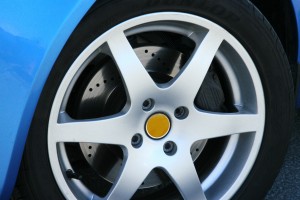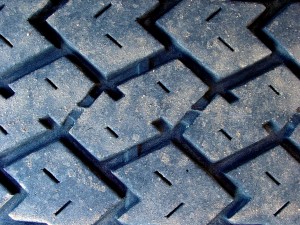Check tire pressure every month
All tires lose air, so check your tires monthly. Always use the same tire pressure gauge and check the air pressure first thing in the morning, not after you’ve driven on them or they’ve been sitting in the hot sun. Inflate to the pressures listed on the carmaker’s decal (on the driver’s door or jamb), NOT the maximum pressure listed on the tire. The recommended tire pressure is based on the weight of your particular vehicle, not the tire brand or tread style.
Most drivers ignore their tires until it’s too late. Then they have to spend big bucks to replace them. However, you can diagnose tire problems and correct them early by performing three critical maintenance chores: checking the tire pressure, measuring the tread depth regularly, and rotating tires every 6,000 miles.
Digital pressure gauge
Digital gauges are easier to read and more accurate than traditional gauges.
Use a tread-depth gauge every other month
Forget about the penny-in-the-tread trick. A tread depth gauge only costs a few dollars and is far more accurate. Measure the tread depth about 1 in. from each edge and the depth of the center tread. They should all be the same. If they’re not, refer to the section on Diagnosing Tire Problems below to find the problem and the fix.
The front tires on front-wheel-drive cars carry a heavier load and perform more work (steering and braking). So they wear faster than the rears. Rotating tires every 6,000 miles spreads the wear across all four tires. Skip it and you’ll find yourself with two bald tires in the front and two halfway good tires in the rear. You’ll lose about 25 percent of the tire set’s life.
Never inflate tires to the maximum pressure!
Never assume that the maximum air pressure shown on the tire’s sidewall is the same as the recommended tire pressure. Filling to the maximum pressure always means you’re over inflating your tires. The recommended tire pressures for your car are printed on the driver’s door or doorpost decal.
Although overinflated tires may give you slightly higher gas mileage, they can cause much more serious problems than they solve. Overinflated tires carry the entire weight of the car on the middle portion of the tread. On wet roads, the center tread can’t pump the water out to the sides so they’re more prone to hydroplaning and also more likely to skid in a stop or in a turn, and blow out on hard bumps. The bottom line: Overinflation is foolish and dangerous. Always follow the inflation pressures shown on the car, not the tires.



Comments are closed.